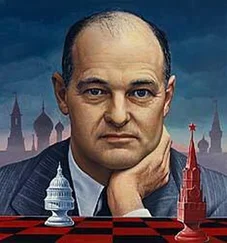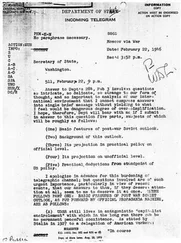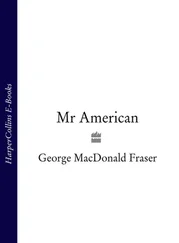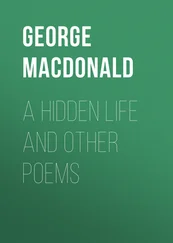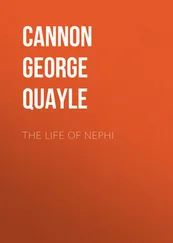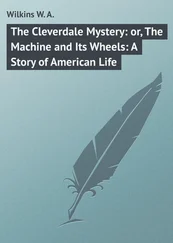Self-confidence slowly came, though. Both children learned German easily: George would pride himself on his fluency for the rest of his life. German boys would occasionally harass him for being an American but he held his own, “flailing away with my fists.” Faith in Santa Claus fell victim to the absence of a fireplace in the pension where the family was staying: “I knew damn well he couldn’t come down the stove.” And George asked his father’s permission, “when I am big,” to join the United States Navy. 40After returning with his family to Milwaukee, George wrote his first surviving poem, entitled “My Soldier”:
I had a big cloth soldier;
Just made for a little boy;
His arms and sword came off, you know,
But he is the funniest toy.
He belonged to the German Army;
But that doesn’t matter to me;
I brought him back to America,
Way across the sea.
He can lift his feet right up to his eyes,
And up to his cap, that’s more;
He can’t salute ’cause his arms are off,
And he couldn’t salute before.
It was a respectable literary effort for a child of nine, and George carefully preserved it—it remains the earliest document in his papers. 41
George portrayed childhood, in his memoirs, as existing along an “unfirm” boundary between external and internal reality. He lived in a world “peculiarly and intimately my own, scarcely to be shared with others or even made plausible to them. I habitually read special meanings into things, scenes, and places—qualities of wonder, beauty, promise, or horror—for which there was no external evidence visible, or plausible, to others.” At the end of Cambridge Avenue was a grimy brick building with a gloomy entryway, behind which lurked something with “a sinister significance all its own.” There may, or may not, have been fairies in Juneau Park. And George was “absolutely scared green” of his grandfather Kennan’s Victorian mansion on Prospect Avenue: when left alone there one day, he turned all the gaslights on and cowered in the corner, where nothing could get behind him until rescuers arrived. 42
Jeanette, who knew him better than anyone else, thought him preoccupied with death when he was little. She did not find it funny when George and his cousin Charlie took to jumping off the porch at the Nagawicka house, joking that they might die, then rolling on the ground laughing. Even more disturbing was a conversation on a sleepy afternoon under a tree overlooking the lake. Jeanette was nine and George was seven, but what he said stuck in her mind so clearly that she could repeat it word for word decades later:
George:[A] person wouldn’t have to live if he didn’t want to, would he? He could kill himself.
Jeanette:But that wouldn’t be nice at all. Why would you want to do that?
George:Well, you could shoot yourself, or maybe drown yourself in the lake.
Jeanette:But we don’t have any guns, and how could you make yourself stay under water?
George:Papa has. He has his hunting gun in the closet in his room. You know that.
Jeanette:Yes, but it’s so big. And if you tried to drown how would you keep yourself down?
Jeanette later understood this conversation as a brother trying to spook his sister by discussing the practicalities of committing suicide, but she did not take it that way at the time. George was insisting then, she thought, on “the freedom to die if one really wanted to.” It was “too awful to talk about.” 43
And yet George did not recall his boyhood as being unhappy: “I was a very normal boy.” Among his fondest memories were the wrestling matches with Charlie : “two grubby little fellows, grunting, pushing, straining, and squirming—both being too stubborn (after all, we were both Scots) to admit defeat, and both of us returning, mussed and dirty, for dinner, only to be sent upstairs first… and told to make ourselves more presentable.” George remembered being “a little bit timid, a little bit of a sissy,” but this did not show up in the diary he began keeping on New Year’s Day 1916, at the age of eleven. 44It opened with another poem:
In this simple, little book,
A record of the day, I cast;
So, I afterwards may look
Back upon my happy past.
What followed reflects, on the whole, an average boy’s life—including the tendency to treat ordinary and extraordinary events in much the same way:
January 6: This morning Cary Jones and his father plunged over the railroad bridge in a limousine and were both killed instantly. I walked around there this afternoon only all that I could see was a busted railing and a lot of splinters. Then I went down to the Town Club to peek at the dancing class.
January 9: Right before supper Jeanette, Kenty (in pajamas) and I had a big pillow fight on Mother’s bed.
January 28: We started baseball practice today. I made a bungle of it but so did nearly everyone who played.
January 31: We didn’t have any school this afternoon because of the President’s visit. I went to hear him speak at the Auditorium… only it was packed full. Then, in going to Uncle Alfred’s office…, I watched his auto go past only never knew it. At last I saw him standing on the observation platform of his train with Mrs. Wilson behind him. My room is being painted over.
February 20: I went to the patriotic service at the church tonight and was very much pleased with Dr. Jenkins sermon on “Preparedness.”
March 2: I went down to Dr. Taylor’s office to be vacsinated for tyfoid. It isn’t supposed to hurt, only on me he struck a blood vessel and it burned like fire. There are 244 cases of tyfoid and 5 deaths from it in the city.
March 3: Censored by G. K.
April 22: Papa said that I can’t go up to camp this summer and that I have to work in the garden instead, ding bust it!
May 6: [After watching a baseball game] I guess I’ve had about as much fun as I ever had today.
George did have one physical reminder of “unfirm boundaries” between external and internal reality. He was color-blind, a fact that showed up in school drawings, to the amazement of his classmates. And the onset of puberty left other boundaries uncertain: “If at that time I’d had a mother to help me, I think it might have been easier.” 45On the whole, though, George’s childhood was, considering the sadness with which it began, cheerfully unremarkable.
George and Jeanette were fortunate to attend Milwaukee State Normal, a grade school used to train teachers. Founded in 1885, it had moved in 1909 into a new and well-equipped building two miles north of the neighborhood where the Kennan children grew up. George entered first grade the following year, making his way back and forth chiefly by streetcar, a mode of transportation he found “thrilling.” His 1916 diary records him also doing so, however, by bicycle, roller skates, and on foot, the latter being the only method when it snowed too much for the streetcars to run, but attendance was expected anyway. After classes were dismissed in the afternoon, George would often stop off at one of the other boys’ houses to play: “As long as I got home by suppertime it was all right.” 46
The school was progressive, requiring no homework, but “we were fully as prepared as any other children.” Grammar was emphasized, especially the diagramming of sentences, and German was taught from the first grade. There was also theater: George played an elf, in Rumpelstiltskin , when he was nine. Both children had, as their fourth-grade teacher, the formidable Miss Emily Strong. She was, as George described her, “a great big strong New England woman, who had no difficulty keeping discipline in her class.” Jeanette thought she “looked like—and excessively admired—Theodore Roosevelt.” 47
Читать дальше


